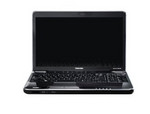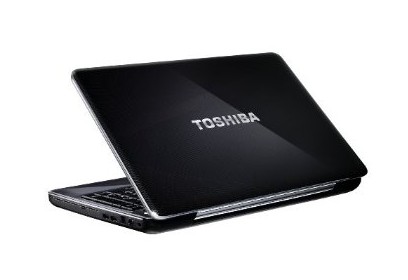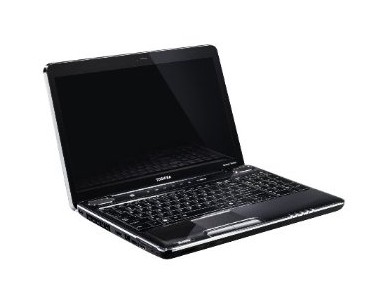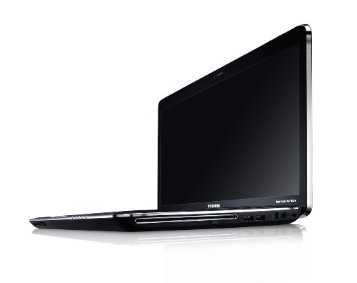Toshiba A505D-S6968
Specifications

Pricecompare
Reviews for the Toshiba A505D-S6968
Source: Notebooks.com
 Archive.org version
Archive.org versionThe Toshiba A505D lives up to its billing as an entertainment notebook. It can handle any video we threw at it and even light gaming. If you plan to use the built in keyboard for extended periods of typing you may be disappointed with the spacing, but since it is backlit and provides an OK amount of feedback, it is still better than those found on many similarly priced notebooks. In the end, this is a great notebook for college students or home users looking for an entertainment notebook. If you are looking for a notebook to take with you every day and use on-the-go — or are a picky typer — then this notebook is not for you.
Single Review, online available, Short, Date: 05/10/2010
Rating: performance: 80% display: 80% mobility: 40%
Comment
ATI Radeon HD 3200: Onboard (shared Memory) graphics chip (on RS780M chipset) based on the HD 2400 graphics core. It also features the UVD video engine to decode HD videos. Beware: Under Windows XP the HD 3200 may have no 2D accelleration because of a driver problem.
Only some 3D games with very low demands are playable with these cards.
» Further information can be found in our Comparison of Mobile Graphics Cards and the corresponding Benchmark List.
AMD Turion X2 Ultra: The AMD Turion X2 Ultra is part of the Puma platform and a mixture of the old K9 core (form the Turion 64 X2) and some parts of the K10 architecture (memorycontroller, hypertransport, crossbar switch from the Phenom). Because of the increased L2 cache ("Ultra" CPUs) and the improved memory controller, the performance increased a bit. Still a similar clocked Core 2 Duo is noticably faster.
ZM-84:
Mixture out of two K8 based cores and K10 uncores (e.g. memory controller). Offers improved power saving functions compared to older Turion CPUs but still not as good and fast as a Core 2 Duo. The ZM-84 is similar to the ZM-85 but features a slower clocked HT link.
» Further information can be found in our Comparison of Mobile Processsors.
16.00":
15-inch display variants are the standard and are used for more than half of all laptops.
The reason for the popularity of mid-sized displays is that this size is reasonably easy on the eyes, often allows high resolutions and thus offers rich details on the screen, yet does not consume too much power and the devices can still be reasonably compact - simply the standard compromise.
» To find out how fine a display is, see our DPI List.2.9 kg:
With this weight, a laptop is rather heavier than average. Devices in this range shine more with screen size and performance than with mobility.
Toshiba: Toshiba Corporation is a Japanese conglomerate or technology group. The company was established in 1939 and in 1978 Toshiba became the official company name. The company's products and services include power, industrial and social infrastructure systems, elevators and escalators, electronic components, semiconductors, hard drives, printers, batteries, lighting, logistics and information technology. Toshiba was one of the largest manufacturers of personal computers, consumer electronics, home appliances and medical equipment.
» Further information can be found in our Notebook Purchase Guide.


 Deutsch
Deutsch English
English Español
Español Français
Français Italiano
Italiano Nederlands
Nederlands Polski
Polski Português
Português Русский
Русский Türkçe
Türkçe Svenska
Svenska Chinese
Chinese Magyar
Magyar


